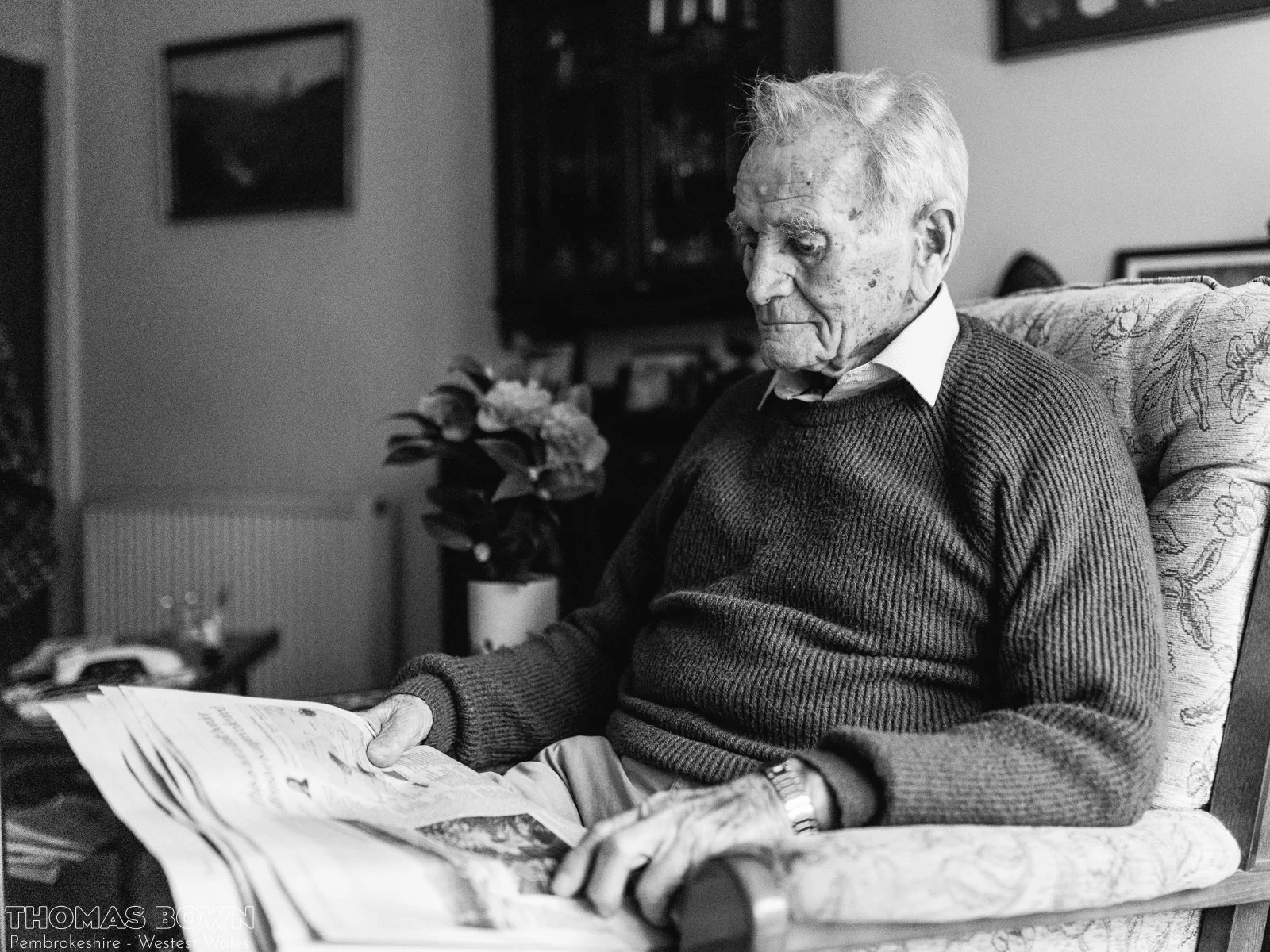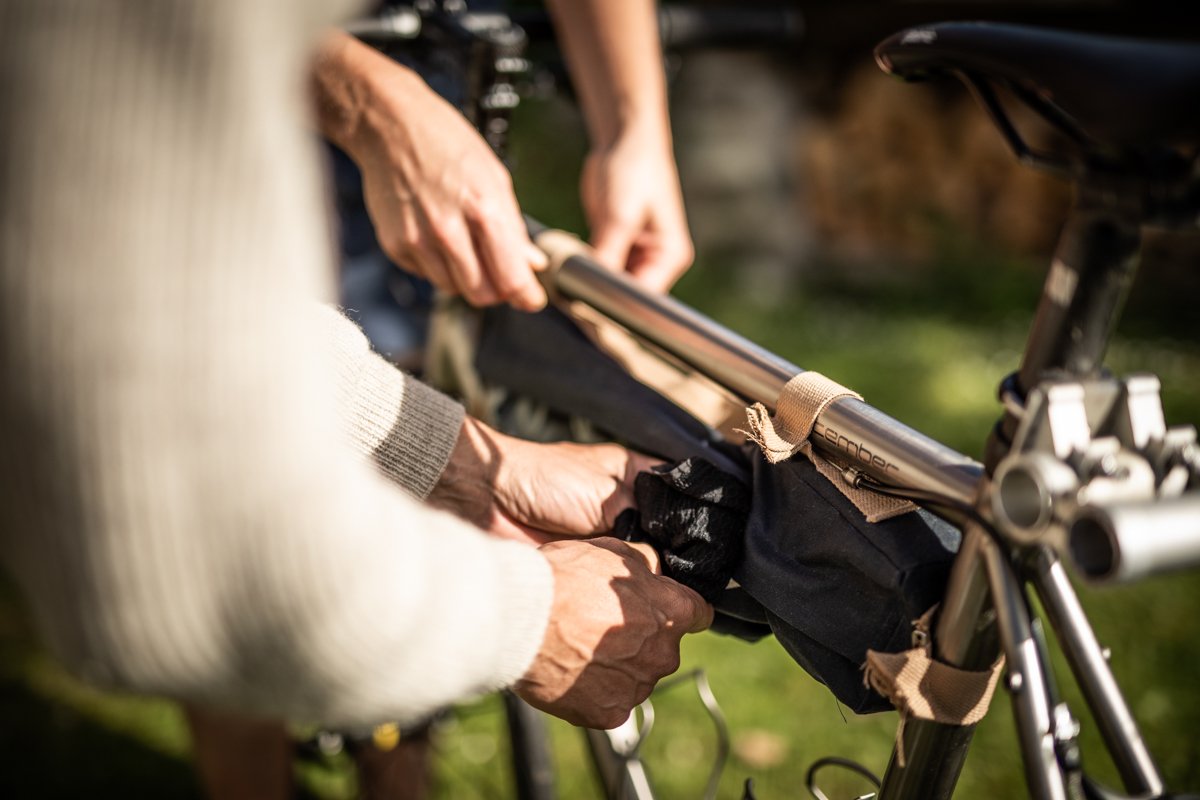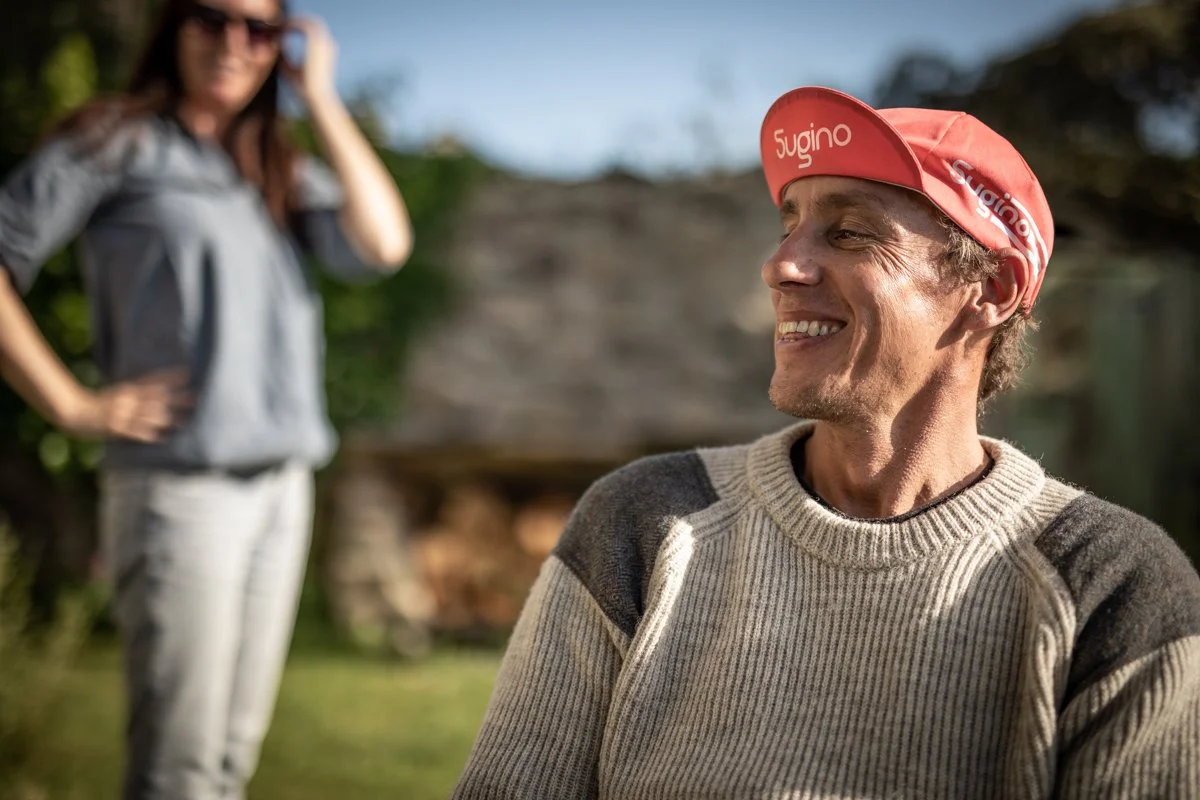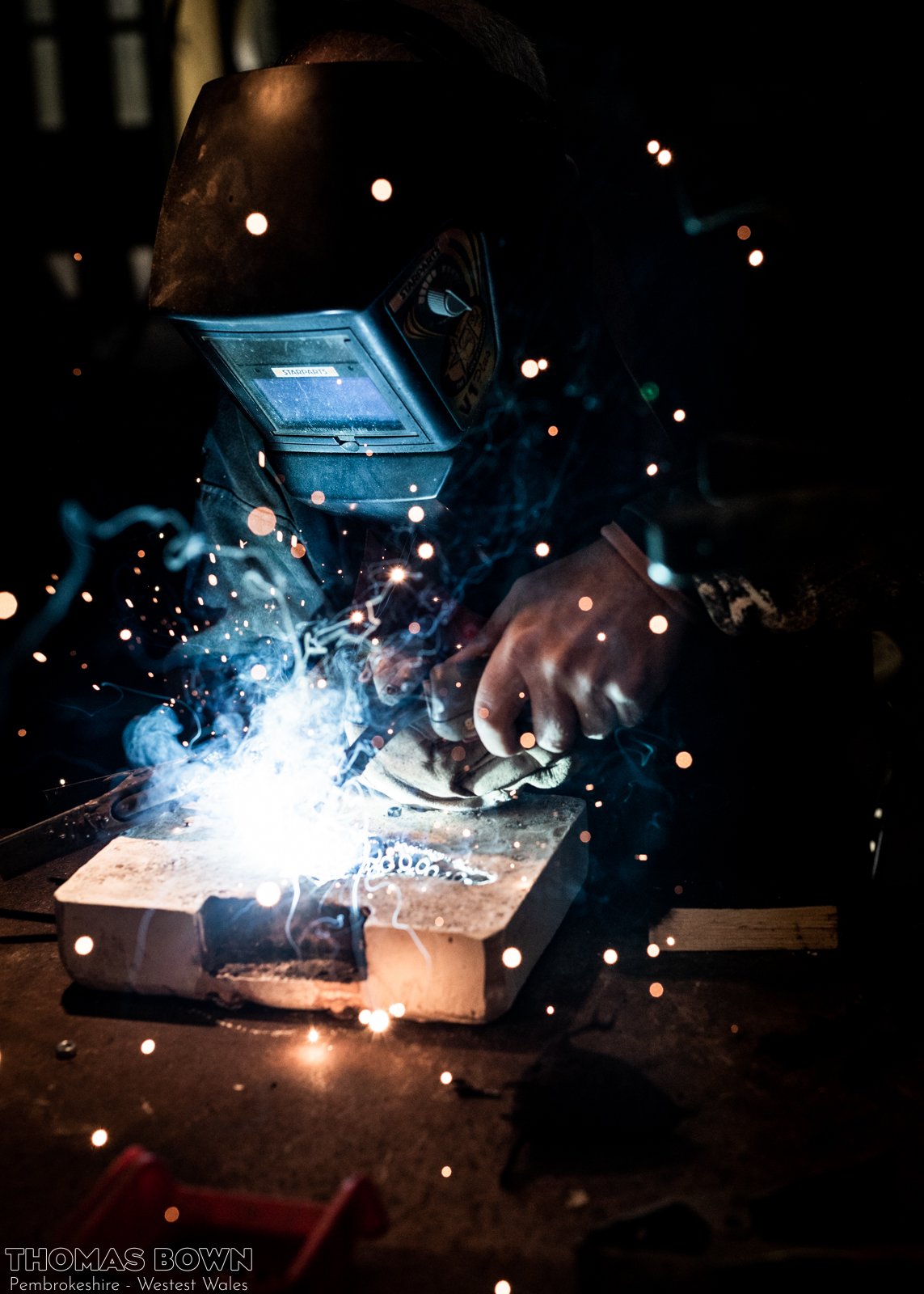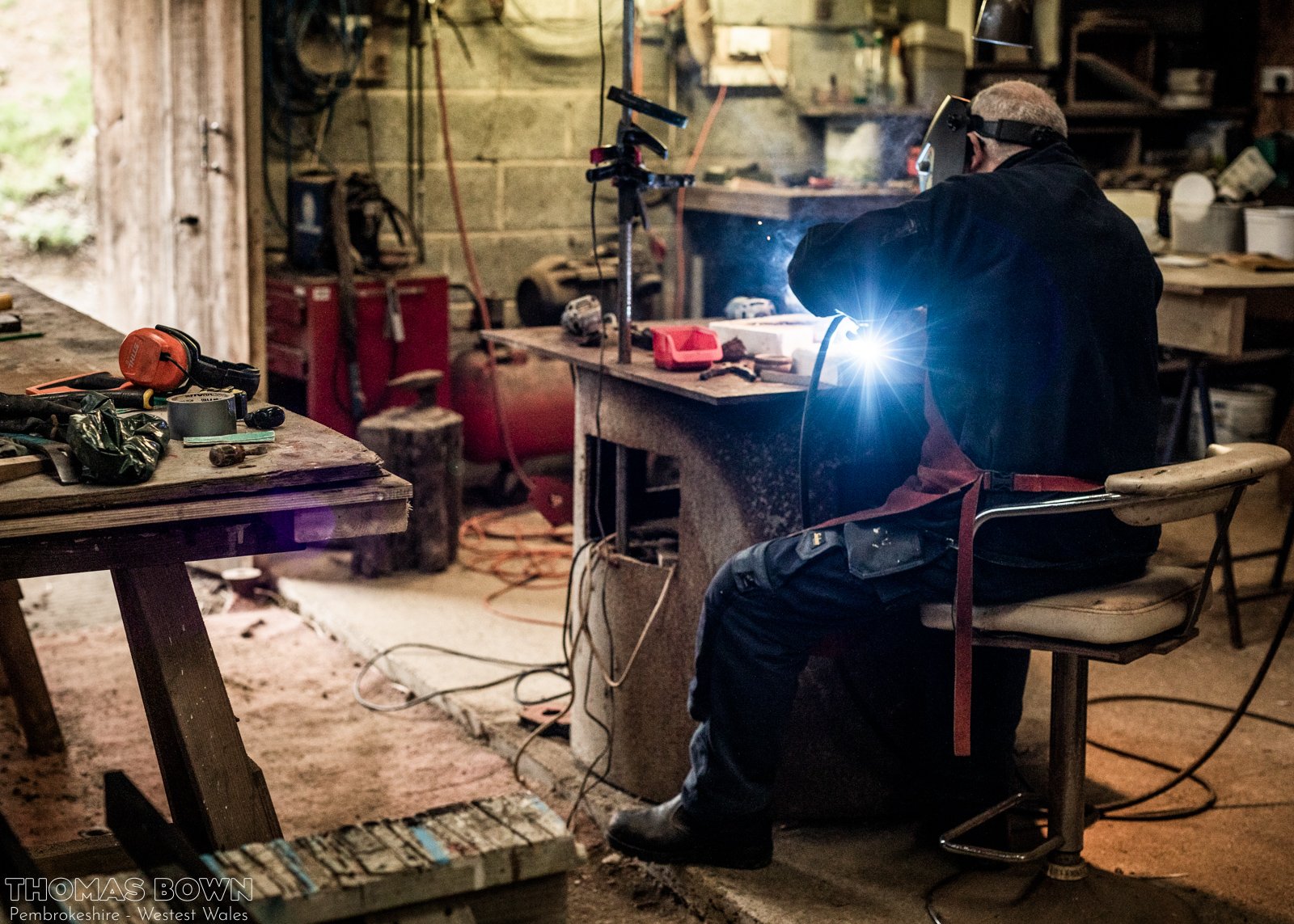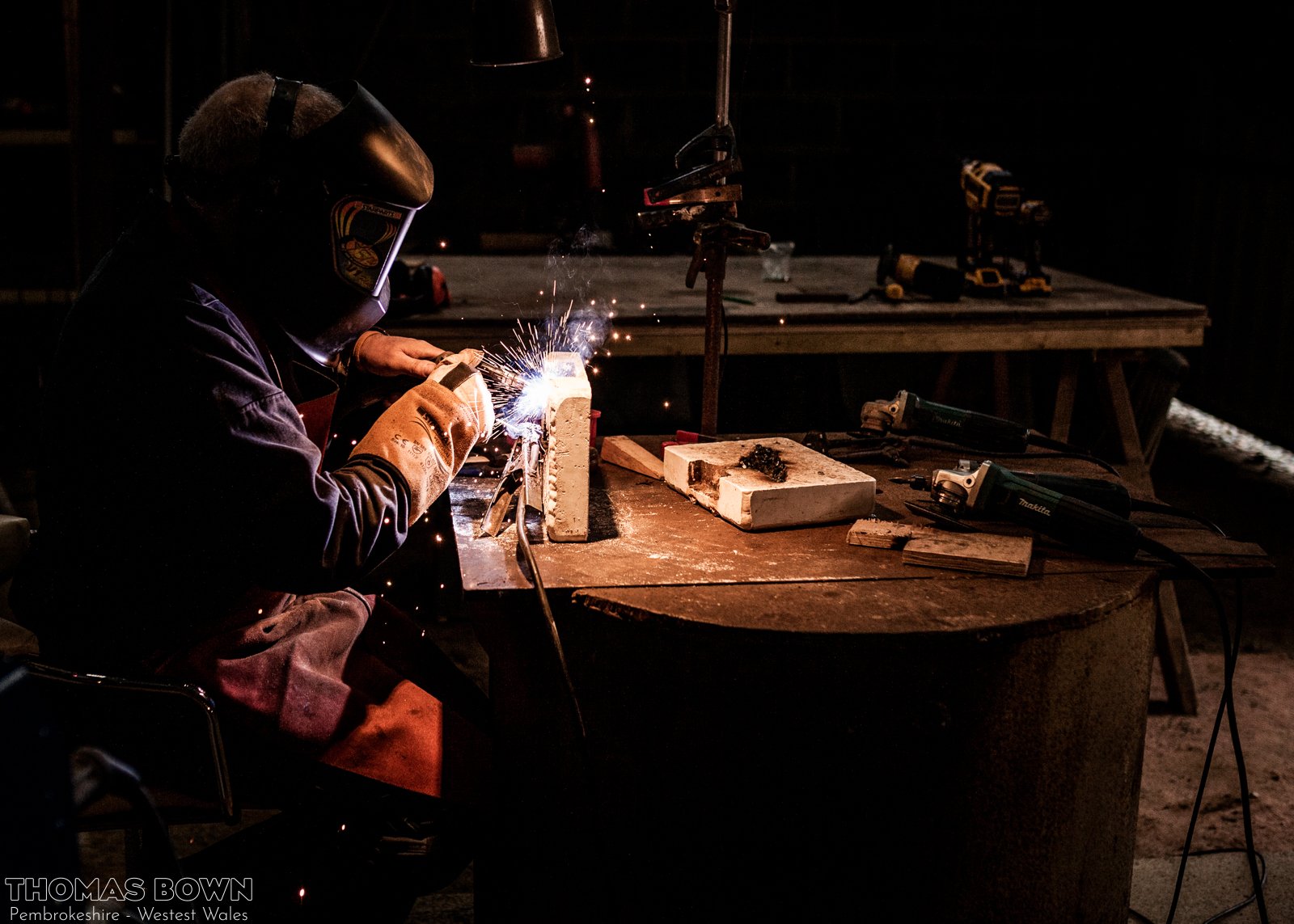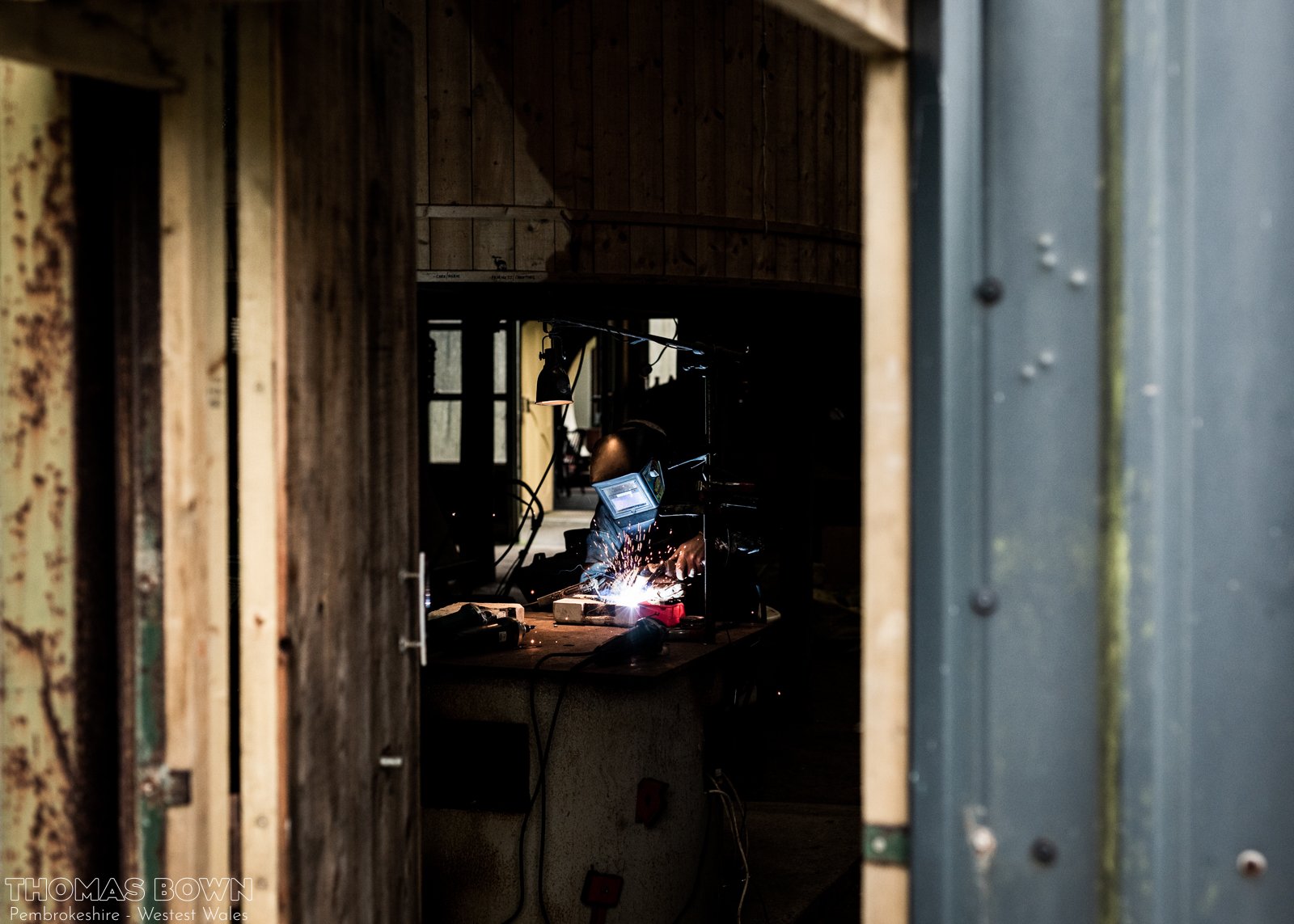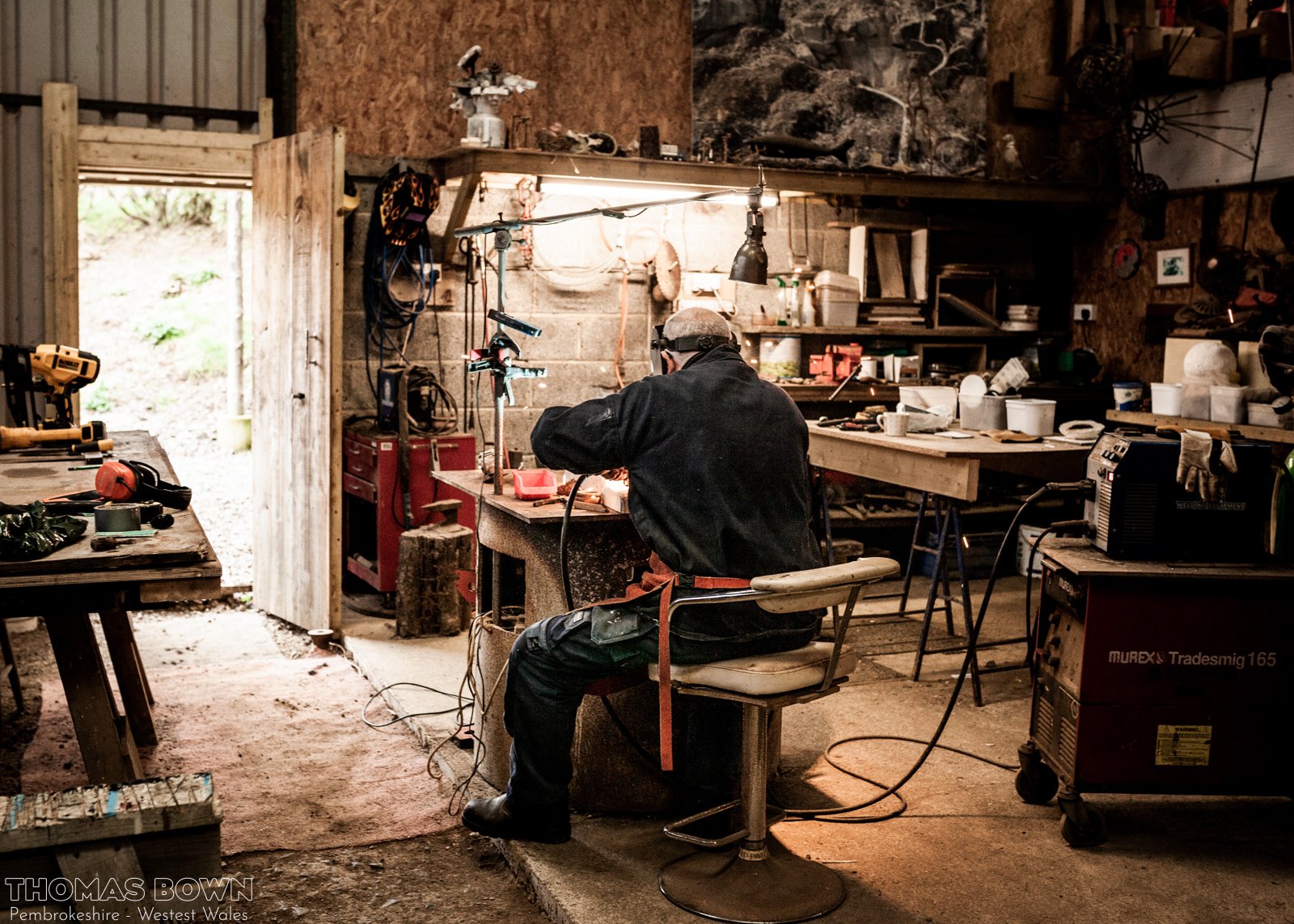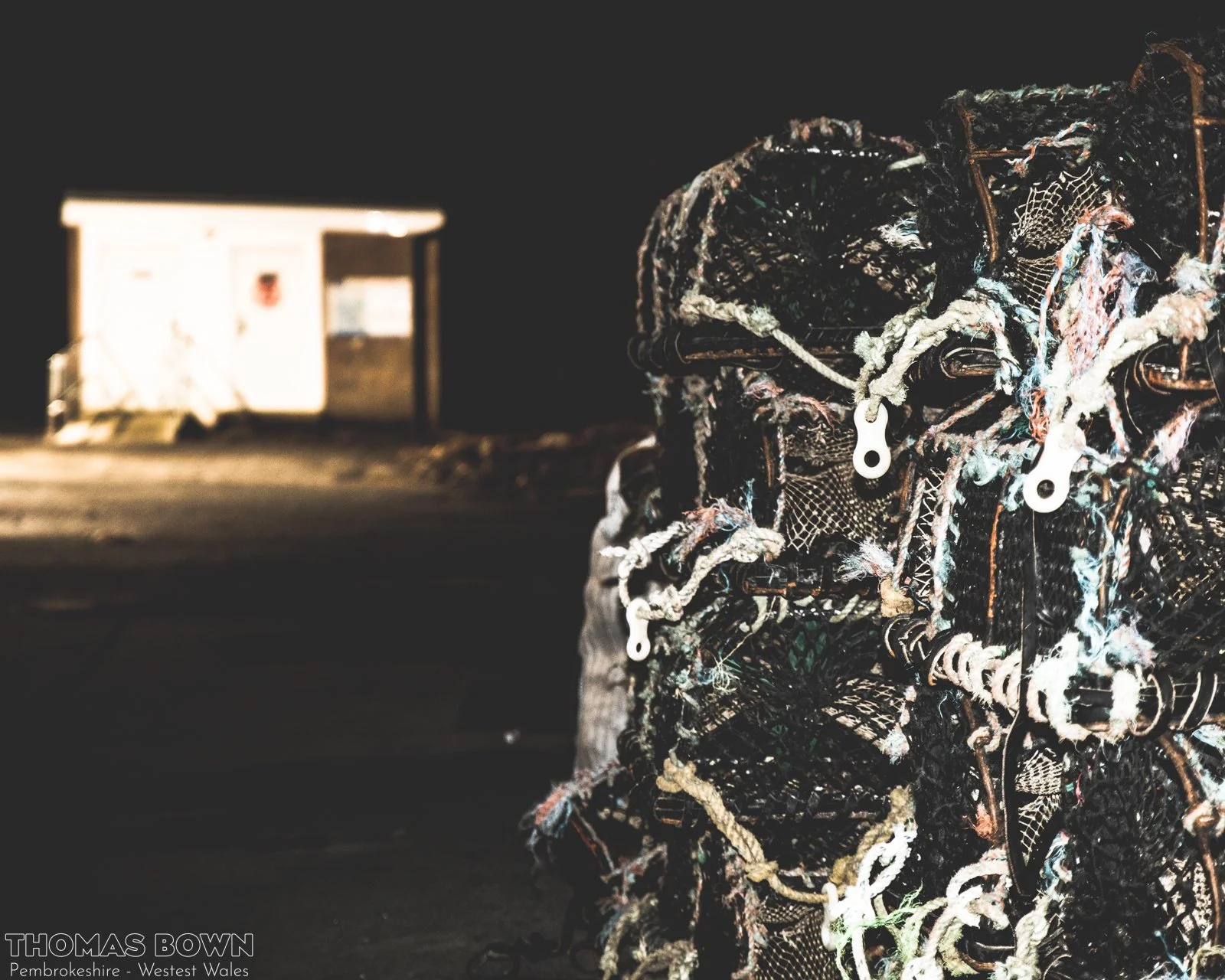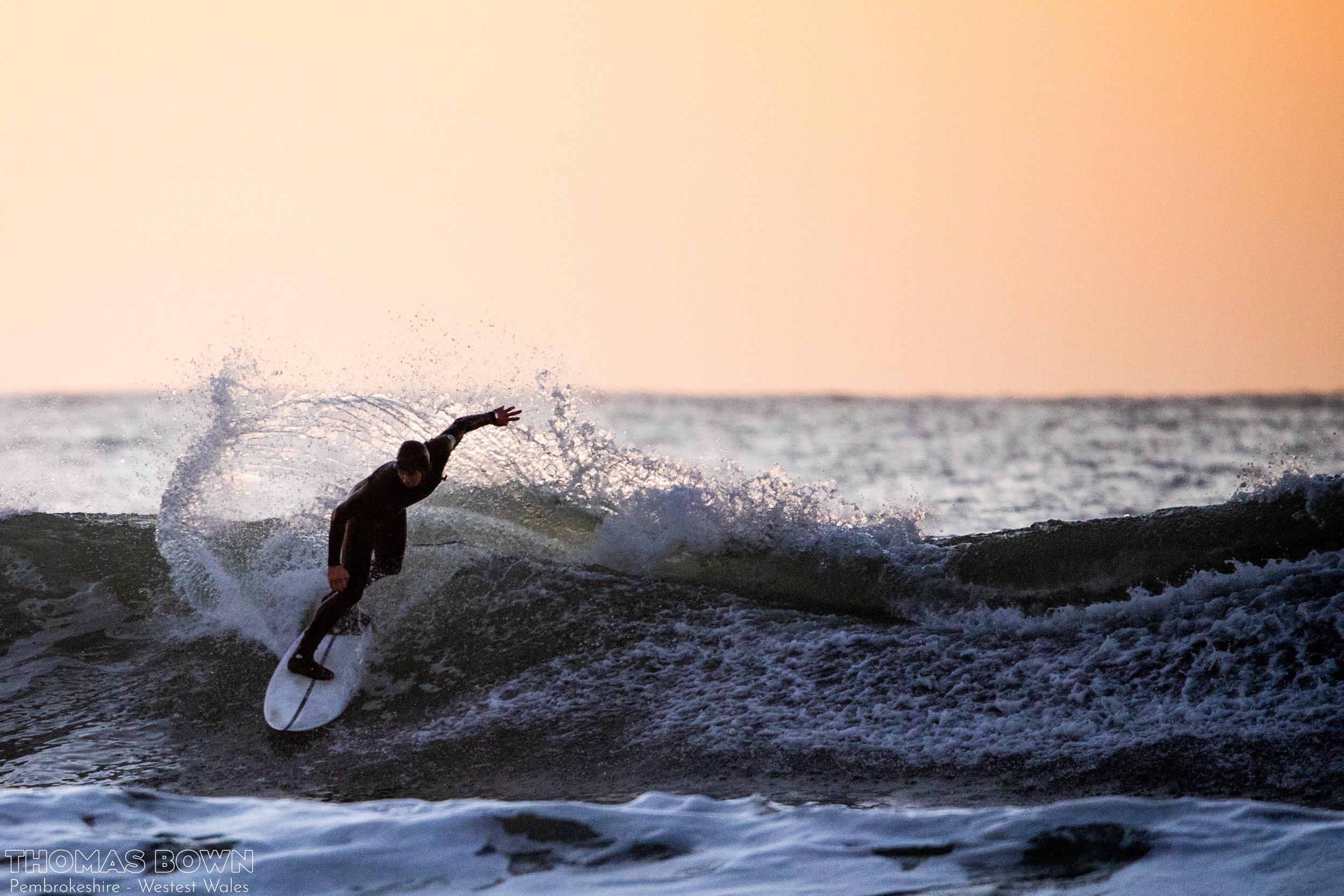Portraits of George who turned 100 a few weeks back. As the local doctor in St Davids for many years he is something of a local legend. It was a real privilege to be asked to take some portraits to add to his memoir that his granddaughter wrote some years ago. His age has diminished his hearing and vision somewhat but he still manages to get out on his tricycle and enjoys reading the news. George has given a lifetime of service to the RNLI; the Western Telegraph gave a good summary of his lifes work in their piece on the occasion of his 100th birthday.
He served as honorary medical advisor (HMA) at St Davids RNLI for many years and launched with the boat a number of times for medical rescues.He became the HMA in 1956 and was also a member of the RNLI’s national medical committee for many years, researching medical incidents, finding and testing medical equipment and designing the medical training for lifeboat crews throughout the RNLI.
Dr Middleton was also one of the founders of Porthmawr surf lifesaving club at Whitesands over 60 years ago which is as vibrant now as was all those years ago and has a close affiliation with the RNLI lifeguards.
He also regularly accompanied the RAF rescue helicopters from Brawdy on missions off the coasts of both Wales and Ireland. Dr Middleton has been awarded the RNLI’s Silver and Gold service badges and is a life Governor of the RNLI.
Dr Middleton was also awarded an MBE in recognition of his services with the RNLI and other organisations.
Flicking through his memoir it’s interesting to read about life as the doctor in a small coastal location in the 1950’s. George loved to spend time at the beach but it was a radio blackspot so if he was needed in town, a local household with radio reception would hang a towel out of the window to alert him. When Search and Rescue helicopters were based at the local airbase, he would find himself onboard and taken out to all kinds of emergencies including trips out to the offshore lighthouses when they were still manned by a small crew.
I reflected that over the course of his lifetime, George can say that he has seen it all, and while tensions in Ukraine rumble on to an unknown conclusion, George reads about it in his daily newspaper and maybe it feels like a petty squabble when seen through the wideangle view of 100 years.




